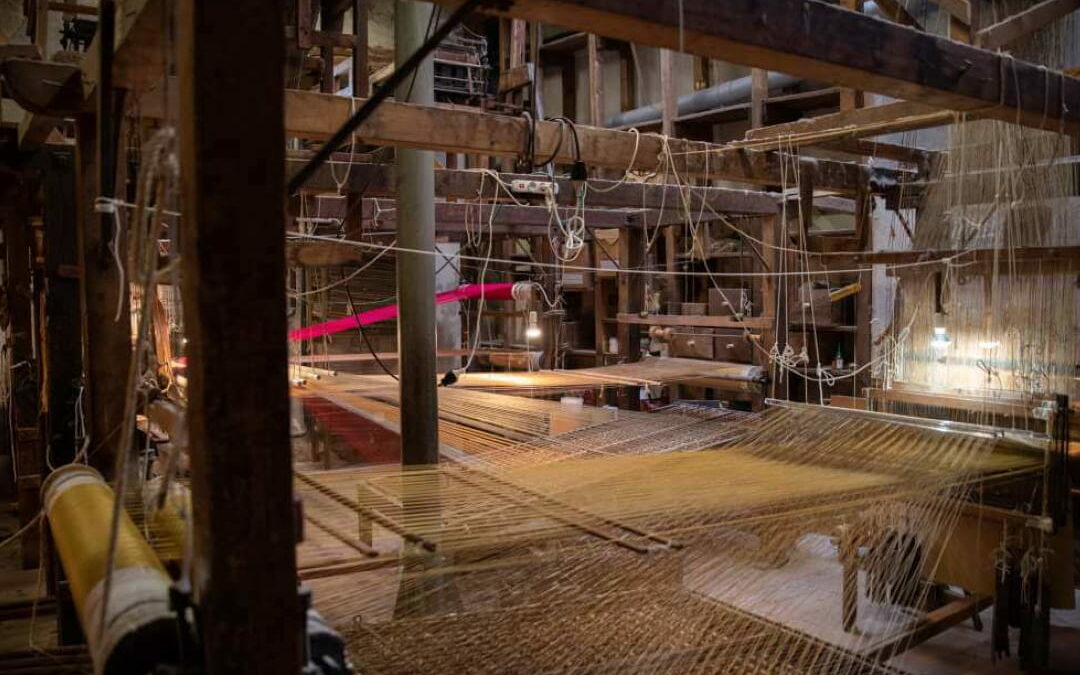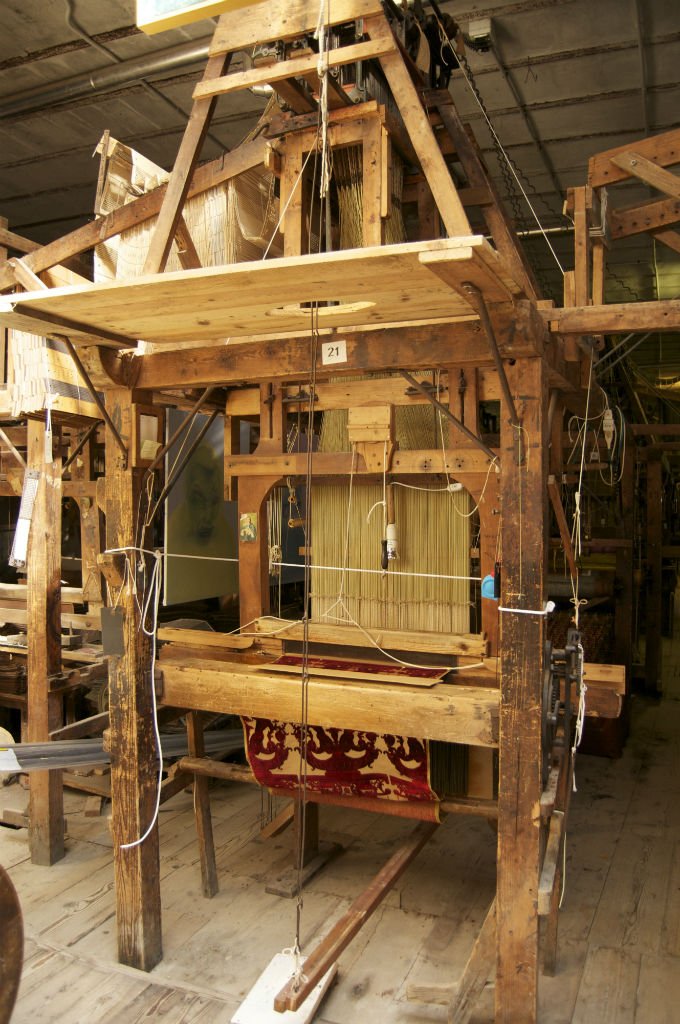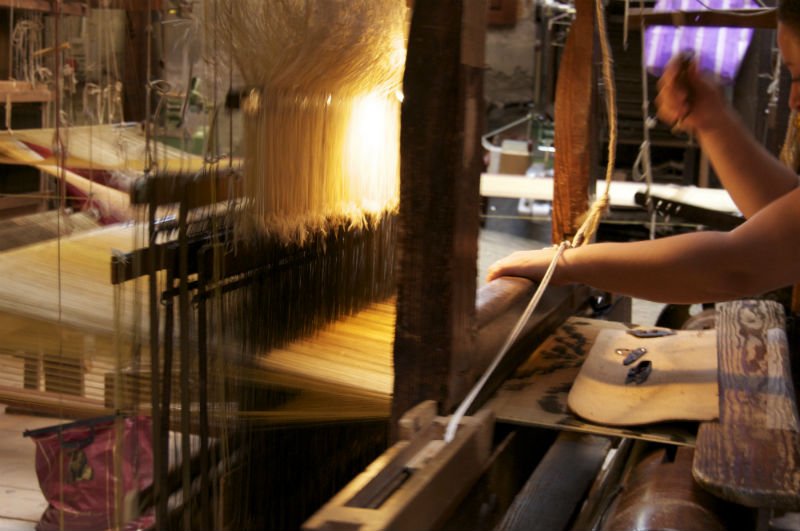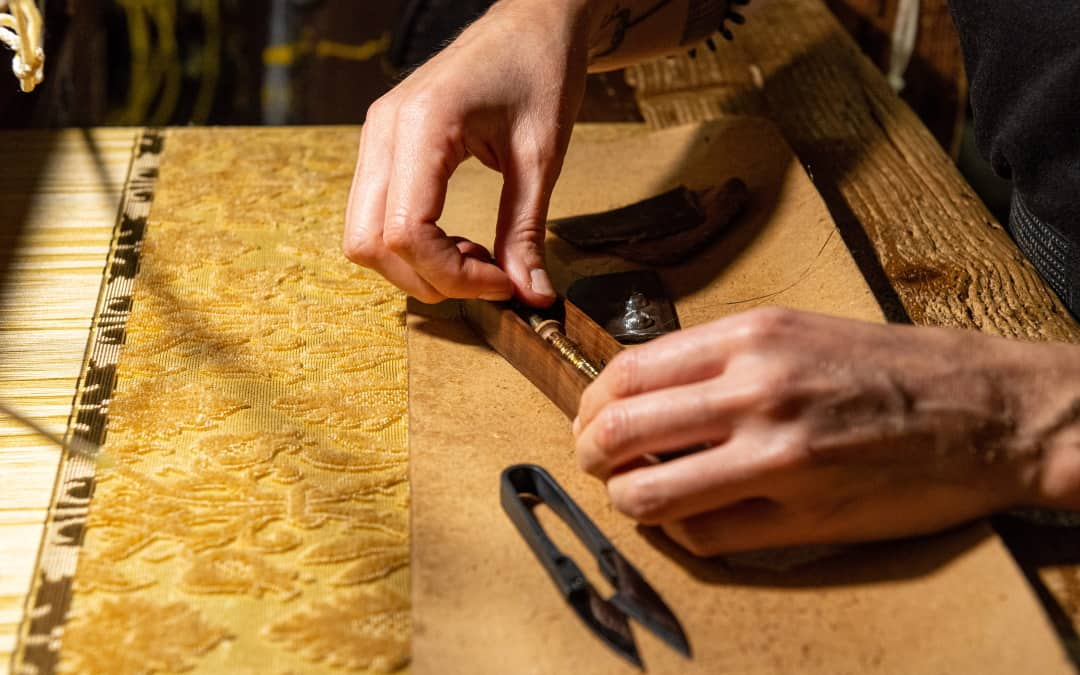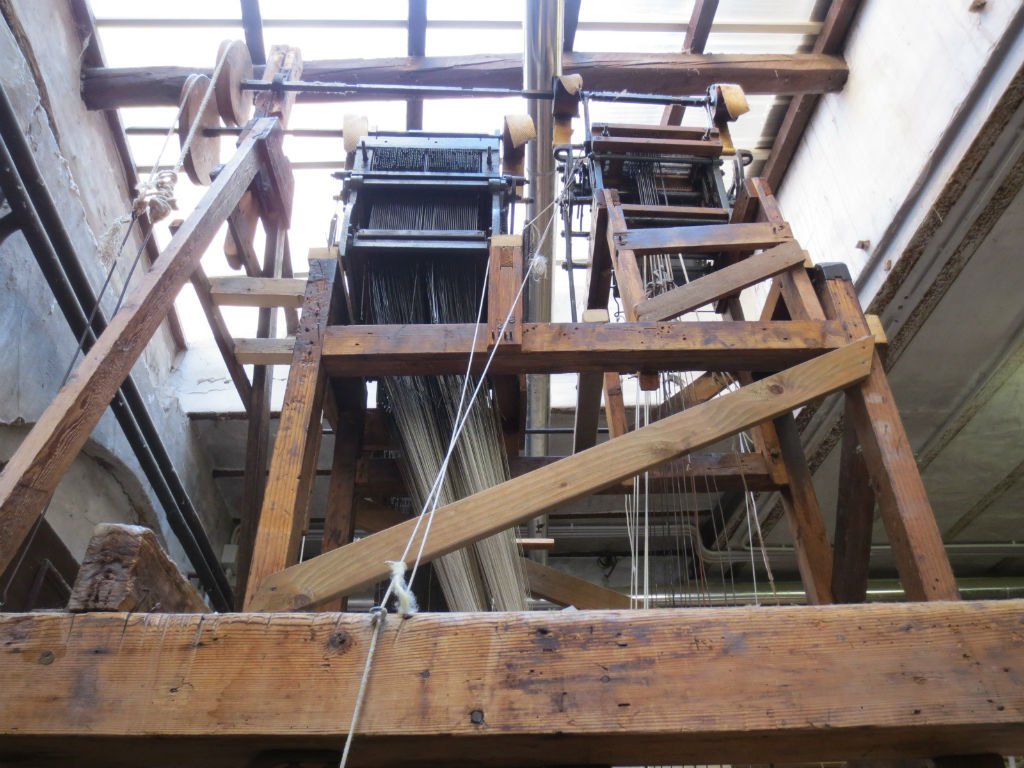The loom invented by Joseph Marie Jacquard marked a pivotal point in the history of the textile industry and of Luigi Bevilacqua’s fabric mill, too. Read on to learn how it works and discover the characteristics of Jacquard fabrics.
The History of the Jacquard Loom
Until the early 1800s, looms like those in our weaving mill were operated entirely by hand. Standing next to the weaver, an assistant pulled some grips on the side of the loom to lift the heddles and make the warp threads pass through them. These assistants were usually girls, often the weavers’ daughters, who could learn their mothers’ job by observing them all day long. This production process was slow and complex, and an experienced weaver could produce only 4 inches of fabric per day.
In France, where there was greater openness to technological innovations, the domestic textile industry experienced significant progress. In 1806, Lyon-born Joseph Marie Jacquard (1752-1834) patented a machine that could be applied to traditional wooden looms to simplify and speed up the production of woven fabrics and velvets with complex designs.
This innovative machine sparked a revolution in the textile industry. Textile workers, fearful of losing their jobs, started riots throughout Europe. Nevertheless, the Jacquard loom quickly became popular, even in Venice.
How the Jacquard Loom Works
Known as the forefather of computers because it can read information from a punched card, this single device combined three projects from the previous century:
- The use of needles and a perforated paper tape containing the pattern, which Basile Bouchon tested in 1725.
- The replacement of the paper tape with punched cards attached to one another, which Jean-Baptiste Falcon proposed in 1734.
- The use of a mechanical cylinder above the loom, designed by Jacques Vaucanson in 1744, to automatically replace punched cards while weaving.
When integrated into a traditional loom, the Jacquard machine simplified and sped up the production of even the most complex patterns, eliminating the need for weavers to have assistants, as they could operate it independently. Through a system of strings, it allows the heddles to be raised automatically according to the holes on the cards that reproduce the design in a simplified yet perfect way. This invention was a true revolution, as it was the first machine that could automatically repeat a series of actions.
Without this invention, our production of handmade velvets would be much slower. Jacquard fabrics, in fact, are characterized by their extremely elaborate and colorful patterns that are woven directly into the fabric and therefore not printed or embroidered. Our historical archives contain more than 3,500 ornamental patterns that we can reproduce with our looms.
Jacquard Looms for Bevilacqua’s Fabrics
The 18 antique looms in our weaving room are all equipped with these machines ever since the Tessitura was founded in 1875.
These looms allow us to produce about 14–16 inches of velvet per day using the same methods as back then. The work is still entirely handmade, as these looms are operated by our weavers, who must also cut the velvet by hand.
We take care of them by still using punched cards made of cardboard and by replacing their damaged parts with those we collect from our other machines.
The Jacquard loom was the forerunner of modern industrial textile looms. However, we still use original antique looms, part of our history, to produce unique and exclusive velvets and Jacquard furnishing fabrics worthy of the Venetian tradition.

